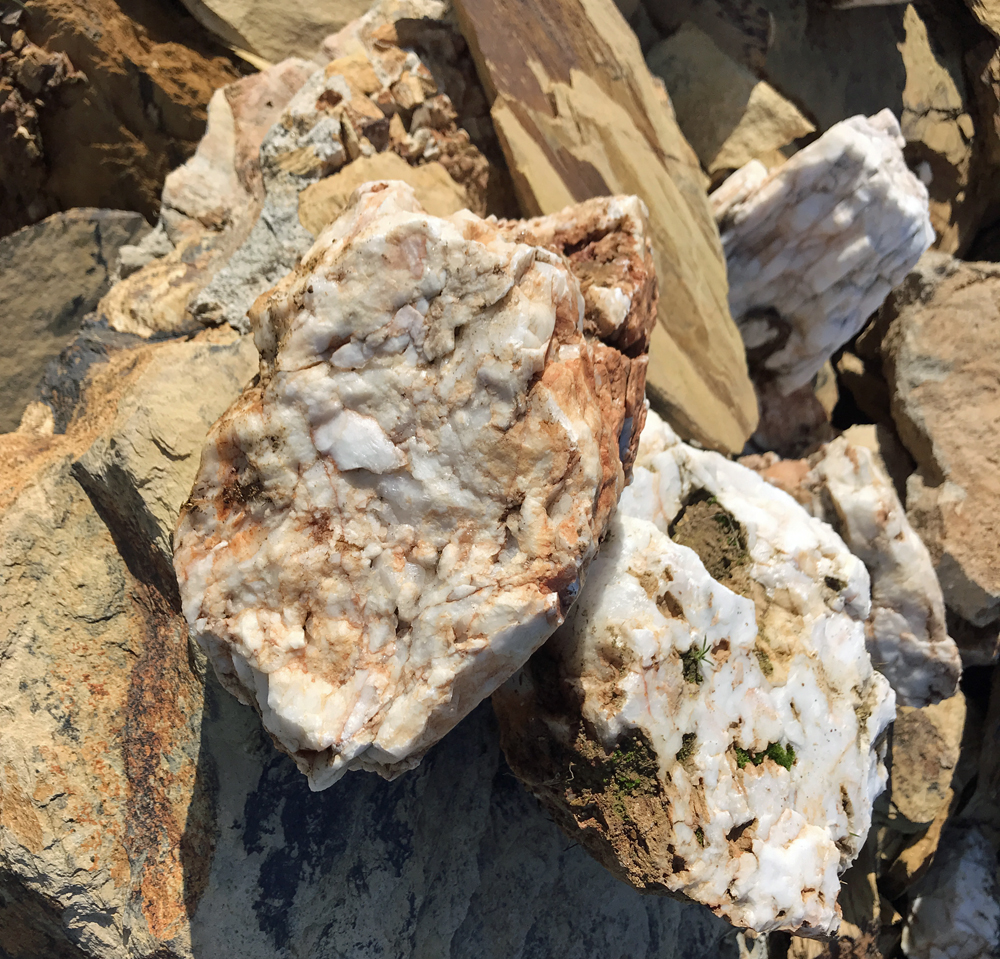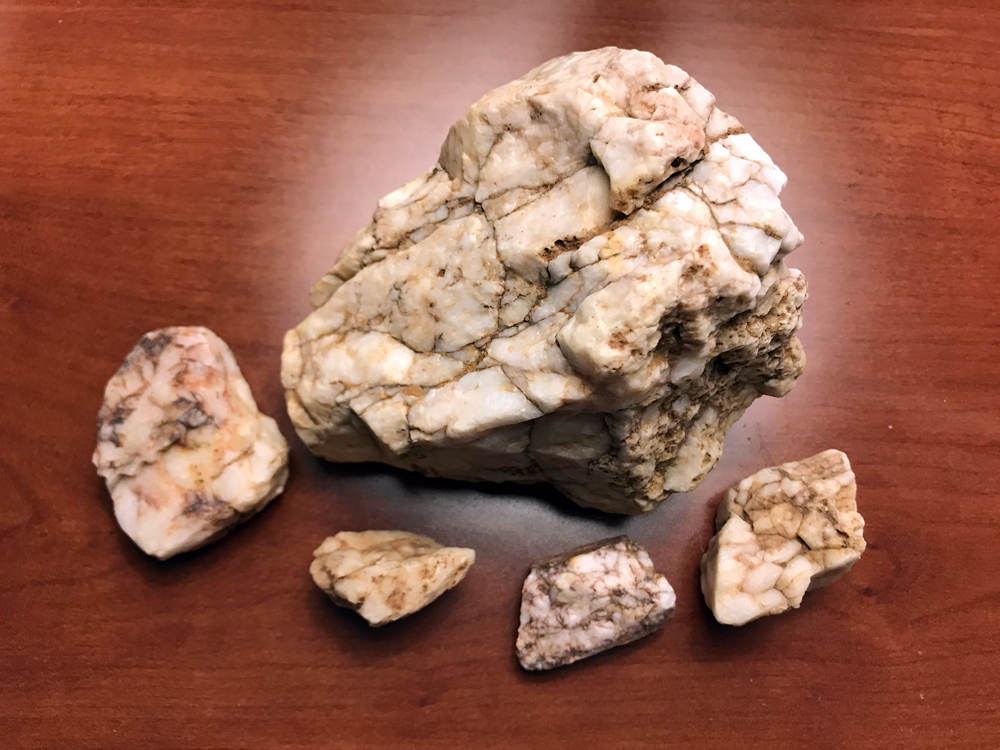A few days ago I had to leave Las Vegas on an emergency trip to help out some friends. The couple I know owns a hundred acre horse ranch in Amador County, in the Sierra Nevada foothills. Their spread is near Plymouth. The heart of California’s Mother Lode Gold country.
When this husband and wife first bought their property I came out with my gold detector. I was delighted to find broken quartz everywhere. Most displayed iron staining and many contained vugs or cavities.
Alas, only a small speck or two of gold was found in a shallow ditch running through the acreage. The nearby creek had been dredged for gold but my friends didn’t own any of that stream. Nor did they own property containing any tailings.
Never-the-less, the many small pieces present might be useful one day for tumbling, as their dark vein patterns contrast nicely with the quartz matrix or host rock. Even if you can’t find gold, you can often find something else.
Iron staining and vugs are signs of mineralization and activity within a rock. Something has acted on the stone. Most quartz is barren, white colored with no character. Sometimes called bull quartz. You look for character when you look for gold. Decomposition or crumbling quartz is another sign to watch for.
Having said all this, the finest gold in quartz I have found displays no other minerals save a scattering of the gold itself. My specimens are milky to near pure white with only gold showing in the matrix.
The lesson is that if you have the time, detect all quartz, even that which looks sterile. If you don’t have the time, limit your search to quartz that shows mineralization or the effects of forces which have altered the rock.

![]()
The quartz on the left shows iron staining, the material on the right shows vugs. These have not been cleaned and both show the clay soil of the area.

![]()
The larger rock might make one or two interesting slabs. The smaller pieces might be tumbled.


